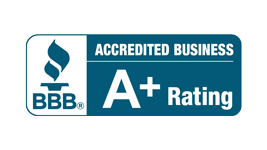Effective Strategies for Saving Money on a Tight Budget
Practicing financial discipline can strengthen your savings against future uncertainties, no matter how challenging your current financial situation may be.
Nearly 73% of Americans are willing to reduce their daily expenses to achieve their long-term financial goals. [1]
By examining your spending habits and utilizing financial resources, there are numerous strategies to enhance your financial health. There are strategies to help you start saving, even when every penny counts. From setting realistic and achievable goals to smarter shopping techniques, we guide you through practical approaches to prioritize savings.
Track Your Spending Habits
Tracking your spending habits is a critical step toward financial stability, especially when money is tight. Start by reviewing your bank statements and categorizing each expense. It helps you identify where your money goes each month.
Creating a monthly budget can provide a clear picture of your financial health. Include essential categories like groceries, utilities, and transportation. Consider using a spending plan to prioritize your financial goals. It can allocate funds toward an emergency fund, credit card debt, and your savings account.
Use modern technology to your advantage by setting up automatic transfers to a high-yield savings account. It ensures you save before spending on non-essentials.

Identify Unnecessary Expenses
When money is tight, begin by reviewing your bank statements and credit card bills to pinpoint where your money is going. It illuminates any non-essential spending habits.
Consider tracking your spending for a month for a clearer picture. Use a simple spending plan or an app to categorize each expense. Common unnecessary expenses and ways to reduce them include:
| Expense Category | Action |
|---|---|
| Dining out | Limit meals out |
| Streaming Services Subscriptions | Cancel/optimize |
| Online shopping | Adhere to a list |
| Entertainment | Opt for free events |
Set Realistic and Achievable Savings Targets
Assign a specific amount for savings and categorize it among goals. These may include short-term goals, such as emergency savings, or long-term goals, such as individual retirement accounts. Setting small, manageable goals initially can ensure you don’t feel overwhelmed. For example, aim to save $20 a week and gradually increase as you adjust.
Consider using automatic transfers to sweep a portion of your income directly into a savings account. Opt for options like a high-yield savings account to earn more with existing interest rates. Prioritize building an emergency fund to avoid credit card debt during unexpected expenses.
Tackle High-Interest Debt First
When money is tight, prioritizing financial obligations can significantly impact your savings journey. One effective strategy is to tackle high-interest debt first. Such debts, like those accumulated on credit cards, can quickly escalate, making it challenging to manage finances.
Eliminating high-interest debt helps free up more cash for savings. By reducing the interest payments that accrue daily, you can redirect funds towards more crucial financial goals, like building an emergency fund or investing in retirement savings.
Steps to Tackle High-Interest Debt:
- List Your Debts: Create a list that includes your various debts, interest rates, and outstanding balances. It helps you identify which debts to prioritize.
- Set a Budget: Develop a monthly budget that allocates funds specifically for debt repayment.
- Consider Snowball or Avalanche Method: If high-interest debts feel overwhelming, consider the avalanche method: pay off debts starting with the highest interest rate while making minimum payments on others. On the other hand, the snowball method involves paying off your smallest debts first, gradually moving to larger ones. This approach can provide a psychological boost as you see debts disappearing quickly. [2]
- Automatic Transfers: Use automatic transfers to ensure consistent payments, which can prevent late fees and additional interest penalties.

Consider Debt Consolidation Options
When managing multiple high-interest debts, considering debt consolidation options can be a strategic financial move. Debt consolidation involves combining several debts into a single loan, ideally at a lower interest rate. It can simplify your financial responsibilities by reducing the number of payments you need to make each month.
Explore Loan Refinancing Opportunities
Refinancing your loans can be a strategic way to reduce your financial stress, especially when money is tight. By securing a lower interest rate, you can decrease monthly payments and save on interest over time. Here’s how you can start exploring loan refinancing opportunities:
- Review Your Current Financial Situation: Knowing your financial status guides you in deciding which loans to refinance.
- Check Your Credit Score: A good credit score can qualify you for better interest rates. Use tools offered by credit unions or online services to monitor your credit score regularly.
- Compare Lenders: Research different lenders, including banks and credit unions, to see who offers the best refinancing terms.
- Consider Loan Types: Refinance various loan types, like student loans, car loans, or credit card debt.

Opt for Generic Brands and Alternatives
Opting for generic brands and alternatives can be a practical strategy when saving money is essential. These products often offer similar quality at a fraction of the cost compared to name brands, allowing you to stretch your budget further.
In the grocery store, for example, generic brands of staple items like pasta, canned vegetables, and cereal are significantly cheaper yet maintain comparable quality. By choosing these alternatives, you can allocate more funds towards your financial goals.
With these adjustments, you can effectively manage your monthly budget and channel those savings into short-term goals, such as retirement savings or a down payment on a home.
Strategize Tax Refunds for Savings Boost
When money is tight, using your tax refund strategically can give your savings a much-needed boost. Consider the following strategies to maximize this opportunity:
- Emergency Fund: Direct a portion of your refund to build or reinforce your emergency fund. It ensures you’re prepared for unexpected expenses without relying on credit cards.
- Debt Reduction: Allocate funds towards paying down high-interest credit card debt or student loans, helping to alleviate financial pressure in the long run.
- Savings Account: Deposit part of your refund in a high-yield savings account or a credit union account to earn more interest over time.
- Retirement Savings: Consider contributing to your retirement account (IRA) or 529 plan to plan for your future.
Reduce Utility Costs
When money is tight, reducing energy costs is a practical way to start saving. Begin by reviewing your bank statements to identify recurring expenses. To decrease utility bills, focus on energy conservation. Implementing a few simple measures can make a significant difference:
- Use LED Bulbs: They are energy-efficient and last longer.
- Use Energy-Efficient Appliances: Energy-efficient appliances lower utility bills by using less power than traditional models.
- Unplug Appliances: Reduce phantom energy usage by unplugging devices when not in use.
- Programmable Thermostat: Adjust heating and cooling according to your schedule, saving energy when you’re not home.

Enhance Income Through Side Gigs or Freelance Work
Enhancing your income through side gigs or freelance work can be a viable solution to start a savings plan. Here’s how to get started:
- Identify Your Skills: Assess what skills or talents you have that can be monetized.
- Research Opportunities: Platforms like Upwork, Fiverr, and Freelancer offer numerous opportunities for freelancers in various fields.
- Create a Schedule: Balance your primary job with your side gig by setting clear hours for when you’ll work on each.
- Set Financial Goals: Use earnings from your side gig to contribute to a savings account.
- Track Your Income and Expenses: Keep a separate checking account for your freelance work to easily manage income and expenses. Monitor your bank statements to understand the additional income flow.
Plan Meals to Reduce Food Expenses
Planning meals is a practical way to cut down on food expenses, even when money is tight. Start by creating a shopping list before heading to the grocery store. A well-organized list focused on essential items helps prevent impulse purchases and keeps spending in check.
Implementing a meal plan can minimize food waste and ensure every purchase is purposeful. Try setting aside time each week to map out your meals, incorporating ingredients already available in your pantry. Opt for dishes that can use up leftovers creatively.
Buying in bulk can also lead to savings, but only if you use those items regularly. Pair these purchases with the use of other methods, like the envelope system, to manage your grocery budget effectively.

Implement Smarter Shopping Techniques
Implementing smarter shopping techniques can make a significant difference in your budget. Here are some strategies for smarter shopping:
- Use Discounts and Coupons: Take advantage of discounts and coupons, either online or in-store, to save on essentials. Consider using apps or browser extensions that automatically apply coupons at checkout.
- Compare Prices: Check prices at different stores or online to find the best deals. Don’t forget to consider bulk buying for non-perishable items if it offers a significant discount.
- Avoid Shopping While Hungry: Hunger can lead to unnecessary buying. Eat before shopping to maintain focus on your list.
Participate in a Money-Saving Challenge
Participating in a money-saving challenge can be a fun and effective way to start saving when money is tight. These challenges encourage creativity and discipline, helping you start a small savings account. Popular options include the 52-week challenge, where you save a dollar amount equal to the week of the year, or the no-spend month.
For if you are facing foreclosure or need help with debt management, get a free consultation from Richard West today.
Sources:
[1] All in a day’s spending: Americans’ habits are changing. (n.d.). Empower. https://www.empower.com/the-currency/money/research-americans-daily-spending
[2] Eneriz, A. (2024, May 16). Debt Avalanche vs. Debt Snowball: What’s the Difference? Investopedia. https://www.investopedia.com/articles/personal-finance/080716/debt-avalanche-vs-debt-snowball-which-best-you.asp



